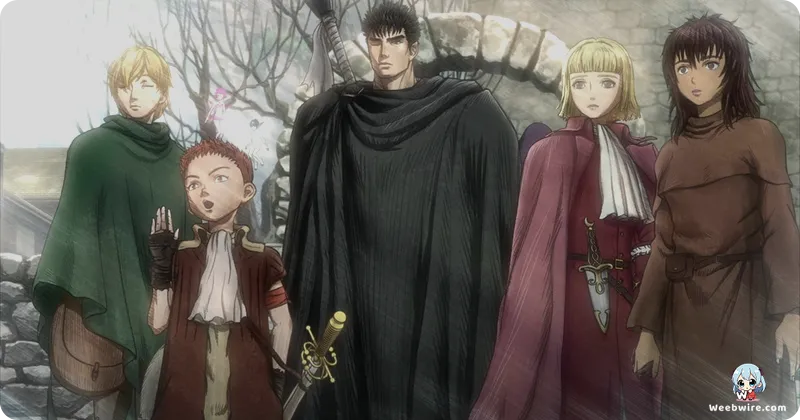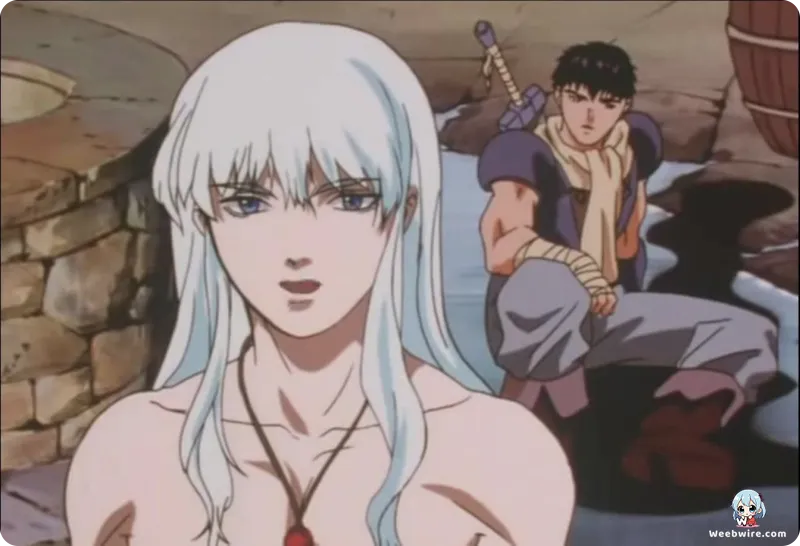The Unyielding Legacy: Revisiting the Groundbreaking 1997 'Berserk' Anime Adaptation

More than two decades after its initial broadcast, the 1997 anime adaptation of Kentaro Miura's legendary dark fantasy manga, Berserk, continues to command respect and fervent discussion among aficionados. Produced by OLM, this seminal series stands as a pivotal moment in animation history, celebrated for its unflinching realism, profound character arcs, and a raw, uncompromising depiction of a world steeped in brutality. While subsequent attempts have been made to bring Guts's harrowing journey to the screen, OLM's initial foray, meticulously focusing on the iconic Golden Age Arc, holds a singular, cherished position in the hearts of countless fans. Beyond its significant critical acclaim and undeniable cult status, a deeper look reveals fascinating production choices and nuances that cemented its enduring impact.
The Distinctive Visuals: Blending Tradition and Innovation
A striking hallmark of the 1997 Berserk anime is its distinctive visual presentation, an ambitious endeavor to translate the unparalleled detail and visceral intensity of Miura's original artwork. Studio OLM, then a relatively nascent entity, ingeniously blended traditional cel animation with early computer-generated imagery (CGI). This fusion, groundbreaking for its era, cultivated a unique aesthetic that, despite occasionally showing its age by contemporary standards, profoundly contributed to the anime's pervasive dark and atmospheric tone. The strategic deployment of CGI was particularly instrumental in portraying vast armies and dynamic battlefield sequences, imbuing the narrative with a sense of epic scale that would have been formidable to achieve solely through hand-drawn animation. Crucially, the nascent digital elements were seamlessly integrated, serving to amplify rather than detract from the intricate hand-drawn character work and richly detailed backgrounds.
A Masterstroke: Focusing on the Golden Age Arc
The decision to adapt exclusively the Golden Age Arc proved to be a masterstroke, allowing for a concentrated and remarkably complete narrative within the series' 25-episode framework. This arc, chronicling Guts's tumultuous alliance with the Band of the Hawk and his complex, fated relationships with Griffith and Casca, is widely regarded as the emotional bedrock of the entire Berserk saga. By homing in on this critical period, the anime was able to delve deeply into the psychological anguish, the powerful bonds of camaraderie, and the ultimate, devastating betrayal that define these characters, offering a comprehensive character study that resonated deeply with viewers. This focused approach also meant that certain elements prominent later in the manga, such as the introduction of Puck and the broader supernatural mythos, were either subtly hinted at or deliberately omitted, shaping the anime into a more grounded, albeit still fantastical, historical drama.

The Ethereal Soundscape: Susumu Hirasawa's Iconic Score
The ethereal and deeply melancholic musical score by Susumu Hirasawa stands as another cornerstone of the 1997 adaptation's legendary status. Hirasawa's avant-garde compositions are inextricably woven into the anime's identity, with tracks like "Forces" and "Gats" (often colloquially misidentified as "Guts") quickly achieving classic status. His unique synthesis of electronic, orchestral, and world music elements forged a soundscape unlike anything else in anime at the time, dramatically elevating the emotional gravitas of pivotal scenes and immensely enriching the overall immersive experience. Hirasawa's contribution transcended mere accompaniment; his music became an integral character, guiding audiences through moments of despair, fleeting hope, and brutal, relentless combat.
Defining Performances: The Voice Acting Legacy
Equally pivotal were the voice acting performances. Nobutoshi Canna's portrayal of Guts, in particular, is frequently cited as the definitive iteration. Canna masterfully conveyed Guts's gruff exterior, his underlying vulnerability, and his simmering, barely contained rage, imbuing the character with a profound depth that many fans still associate exclusively with his rendition. Similarly, Toshiyuki Morikawa's nuanced performance as Griffith perfectly captured the character's magnetic allure and his chilling, boundless ambition. These vocal talents breathed palpable life into the characters, rendering their struggles and triumphs all the more impactful and unforgettable.
Kentaro Miura's Guiding Hand
A lesser-known aspect concerns the direct involvement of manga creator Kentaro Miura himself. While Miura meticulously oversaw the production of the 1997 anime, his hands-on participation in the daily animation process was not as extensive as some might presume. Miura, renowned for his painstaking attention to detail in his manga, provided crucial guidance and approved designs, ensuring the core spirit and integrity of his work were preserved. However, the intensive creative labor for the animation itself was entrusted to OLM's talented team. This collaborative balance allowed the studio to interpret Miura's vision while he continued his monumental work on the manga.
Navigating Mature Themes and the Unforgettable Conclusion
The 1997 Berserk anime also confronted significant challenges in adapting the manga's notoriously graphic violence and mature themes for television broadcast. While the series courageously depicted the inherent brutality of Guts's world, certain extreme elements, especially concerning sexual violence, were judiciously toned down or implied rather than explicitly shown. This careful navigation allowed the anime to retain the manga's dark edge without becoming unbroadcastable, a testament to the production team's thoughtful and responsible approach to sensitive material.
The anime's conclusion, which famously ends abruptly at the horrifying climax of the Golden Age Arc, the Eclipse, left countless viewers stunned and desperate for more. This deliberate narrative choice, while initially frustrating for those unfamiliar with the manga, powerfully underscored the sheer terror and despair of that pivotal event, cementing its place as one of the most shocking and impactful conclusions in anime history. It left an indelible mark on audiences, compelling many to seek out the original manga to continue Guts's harrowing and epic journey.
Ultimately, the 1997 Berserk anime by OLM transcends a mere adaptation; it stands as a foundational pillar of dark fantasy animation that introduced an entire generation to Miura's unparalleled masterpiece. Its unique animation style, iconic soundtrack, powerful voice acting, and strategically focused narrative approach forged an experience that continues to be discussed, analyzed, and revered, showcasing how a dedicated team can transform complex and challenging source material into a compelling visual narrative that truly endures.
Credits
Berserk
Author
Kentaro Miura
Cover Art
Kentaro Miura
Studio
OLM
Publisher
Hakusensha
Producers





